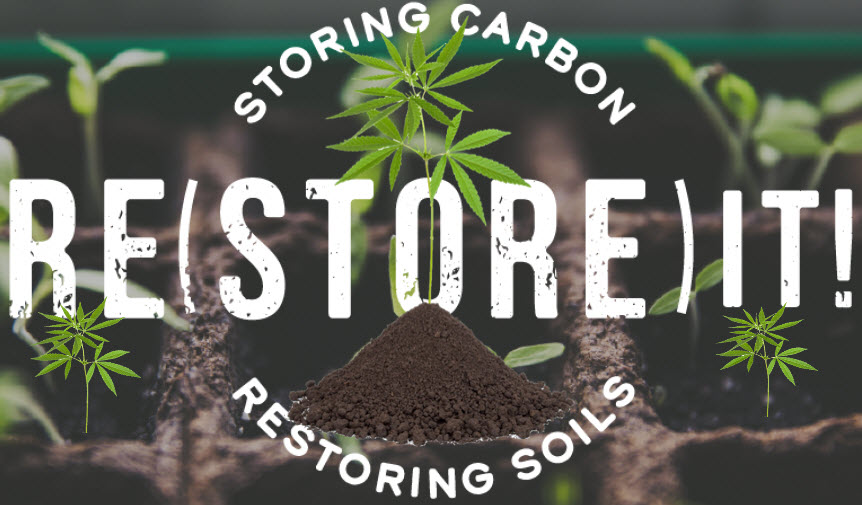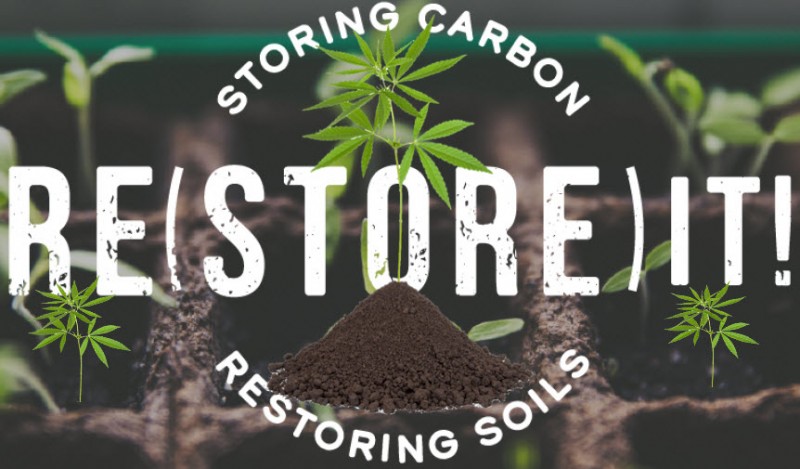Can Cannabis support Regenerative Agriculture?

While the varying amount of applications of the cannabis industry cannot be overestimated, one of the aspects that gets less attention is the agricultural problems or impact with respect to the ecosystem. Now it is important to note that this is a general problem that encompasses all of agriculture and so cannot be ascribed to the cannabis industry only. However, with the increasing prominence of the cannabis industry in different places around the world, it is important to look into how it can be used for the regenerative benefit of the ecosystem.
Common practices among cannabis growers are mostly centered on sustaining the soil in order to preserve yield and ensure a system of continuity of produce. These practices however are prone to causing damage to the soil especially with the large water requirement needed to grow cannabis plant which makes the environment prone to drought. Such effects are some of the reasons why it is important that cannabis growers begin to look into regenerative agriculture as a way out so as to ensure the protection of the soil and the ecosystem ultimately.
What is Regenerative Agriculture?
Regenerative agriculture refers to a series of practices and principles of agriculture aimed at ensuring restoration of the natural features such as enriching the environment, improving water usage and intake, and ultimately the ecosystem at large. Regenerative agriculture involves practices that are no small feat which has added to its reduced popularity among many farmers. It also still remains a very new concept in several climes as most of the practices and principles farmers are more used to are practices aimed at sustainable agriculture and despite possible similarities, there is a big difference between sustainable agriculture and regenerative agriculture.
Common localized practices of cannabis growth are based on sustainable agriculture which is based on the principle of maintenance and sustenance while regenerative agriculture takes it a step further by being centered on regeneration. Regenerative agriculture has more of a healing effect on the environment when placed in comparison with sustainable agriculture.
Benefits of Regenerative Agriculture
As earlier stated, regenerative agriculture is not very common among farmers especially those in a commercially demanding industry such as the cannabis industry in which a very high yield is the goal. There is a lot of effort required for the transition from old practices to regenerative practices however, regenerative agriculture does not only come as a benefit to the ecosystem as it has benefits for both the consumers and the growers.
Consumers who buy cannabis grown through regenerative practices are sure to get a unique and new product with enhanced flavor. These unique strains of cannabis are sure to be biodiverse and seemingly native to the environment of those practices due to the increased amounts of beneficial compounds present in them. These locally adapted genetic strains are sure to catch the appeal of cannabis lovers and all the praise for this should be ascribed to the regenerative agriculture being practiced.
All the advantages of regenerative agriculture being benefited by consumers are more or less beneficial to the growers too. However, the growers have particular benefits from regenerative agriculture such as a reduction in pest infestation which in turn results in less need for pesticides.
Regenerative agriculture also restores natural soil quality while reducing the need for fertilizers.
There is also a reduction in power needed as well as water intake which makes regenerative agriculture a viable and attenable feat for every cannabis grower.
How to start Regenerative Agriculture
Some if not all of the practices encompassed in the regenerative agriculture are practices common to farmers however what differentiates them is how they are directed and applied. Some of the practices involved in regenerative agriculture include;
Conscious cropping: This is aimed at ensuring protection to the soil and enhancing the warehouse of natural components of the ecosystem which includes the soil.
Reduction in artificial light: Limiting exposure of plants to artificial sources of light is also a sure way of ensuring the regeneration of viable components of the ecosystem.
Composting: Biodiversity can be improved through practices such as composting as well as the removal of till farming
Cover crops during the off-season: Planting of cover crops during off-season serves to preserve and increase the quality of the soil along with expelling growth of bad weed.
Worm farming: This is also an important practice aimed at ensuring the regeneration of the ecosystem because of the role it plays and the impact on the microorganisms that benefit the soil.
The apparent benefit is there for the taking and this is why taking the big step to move into regenerative agriculture is one that is sure to be a big benefit to the consumer, the grower, and more importantly the ecosystem. If we don't care about the planet, who will.
HEMP AND CANNABIS TO SAVE THE EARTH? READ MORE...
CAN HEMP HELP SAVE THE EARTH BEFORE LEO'S FLOOD?








